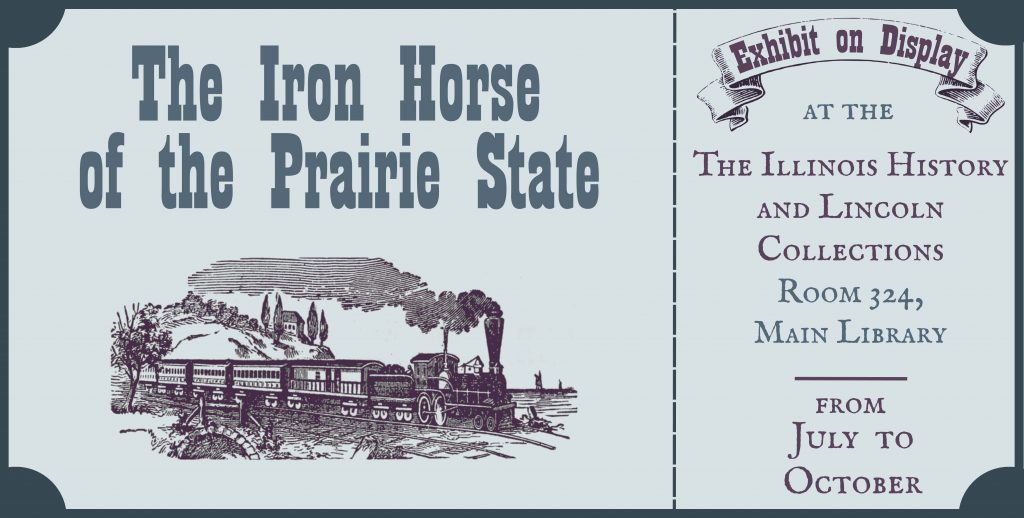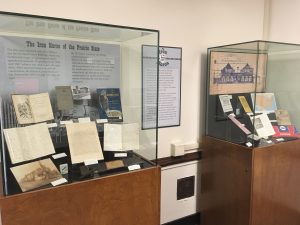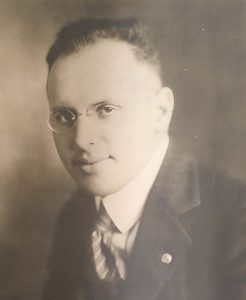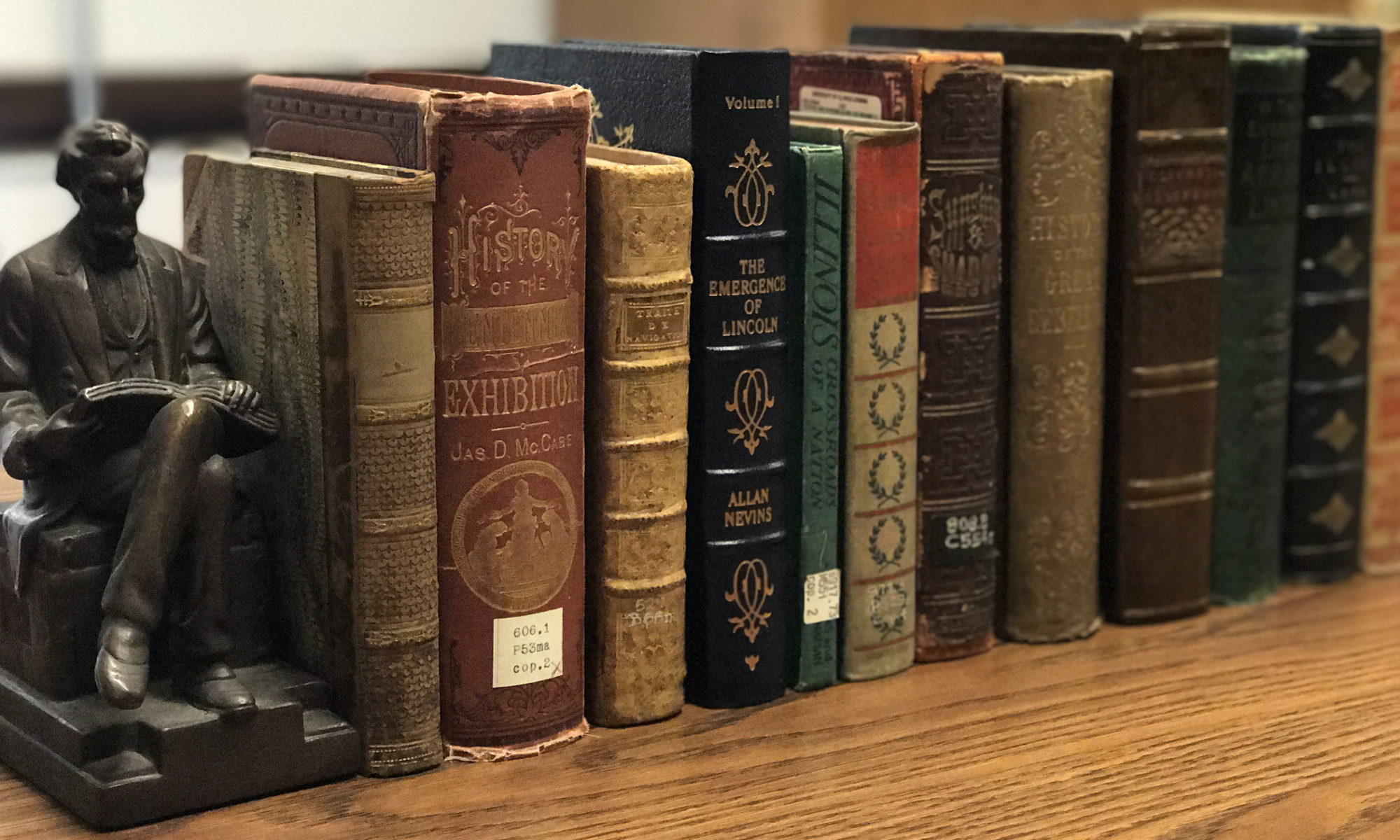On the evening of April 14, 1865 John Wilkes Booth assassinated President Abraham Lincoln at Ford’s Theatre in Washington, D.C. Lincoln sustained a gunshot wound to the back of the head and was carried to a boardinghouse across the street where the surgeon general arrived to attend to him. Lincoln died the next morning on Saturday, April 15, 1865, at the age of 56. Several hours later Andrew Johnson was sworn in as the seventeenth President of the United States, and on April 18 the doors to the White House were opened for people to come through to view the coffin.… Read More
Curating the Illinois Railroad – An Interview with Hailey Vasquez and Claire Weibel

This summer the IHLC presents The Iron Horse of the Prairie State, an exhibit that explores the evolution of the railroad in Illinois’s history. Read about undergraduate student Hailey Vasquez and graduate student Claire Weibel’s experience and insights researching and co-curating this exhibit.

How did the idea for this exhibition come about?
HV: I’ve always loved transportation, especially public transportation, so I thought it would be interesting to curate an exhibit exploring that topic. I had started brainstorming themes while Claire was out of the office and had really liked the thought of doing the exhibit on trains in Illinois, but I was so worried Claire wouldn’t like the idea!… Read More
Sol B. Cohen: A Career in Music
 Sol Cohen was a violinist, composer, conductor, and educator from Urbana, Illinois, who was well known and regarded in the music world, especially in Los Angeles throughout the 1920s. Cohen was born in Urbana on January 11, 1891, to prominent cigar manufacturer Nathaniel H. Cohen and Addie Bernstein Cohen. He studied under French violinist Emile Sauret in Chicago through the early 1900s before traveling to Europe in 1908 to study in Prague, Budapest, and Paris. He wrote of his experiences in his memoir, Years of Pilgrimage: Memoirs of an American Musician, saying, “I left Europe with a very fair technical equipment, a large repertoire, and a mind stored with oceans of excellent music and the stuff of the continental concert halls.”… Read More
Sol Cohen was a violinist, composer, conductor, and educator from Urbana, Illinois, who was well known and regarded in the music world, especially in Los Angeles throughout the 1920s. Cohen was born in Urbana on January 11, 1891, to prominent cigar manufacturer Nathaniel H. Cohen and Addie Bernstein Cohen. He studied under French violinist Emile Sauret in Chicago through the early 1900s before traveling to Europe in 1908 to study in Prague, Budapest, and Paris. He wrote of his experiences in his memoir, Years of Pilgrimage: Memoirs of an American Musician, saying, “I left Europe with a very fair technical equipment, a large repertoire, and a mind stored with oceans of excellent music and the stuff of the continental concert halls.”… Read More
O. Batson Hinman in the Spanish-American War
The O. Batson Hinman Papers, 1898-1899 (MS 794) contain the military documents, newspaper clippings, photographs, and diary of O. Batson Hinman, a Corporal of the regiment Company B from Newton, Illinois in the Spanish-American War.
Hinman was born in Newton in Jasper County, Illinois, and enlisted at the age of 19. His military record describes him as 5 feet 11 inches tall with a dark complexion, brown eyes, and black hair, and he was occupied as a clerk. On May 20, 1898, Hinman was promoted to Corporal in the Company B of the 4th Regiment of Illinois Volunteers.
The Spanish-American War was a short-lived conflict in 1898 between the United States and Spain that derived from the United States’ economic interest in Cuba.… Read More
